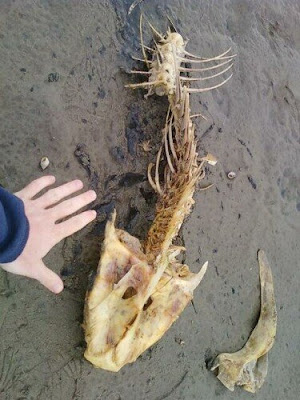
In general, there are two main forms of “being sick”—a bacterial infection which most know can be treated through use of antibiotics and a viral infects in which case…just go back to bed because there’s nothing you can do. Well, welcome to 2010 America! A recent publication in PNAS, the Proceedings of the National Academy of Sciences in the United States of America explains current research being performed using bacterial vectors as a mechanism to deliver RNase P-based ribozymes into specific human cells and inhibit viral infections (1).
In a nutshell a virus is an infectious agent that hijacks the cellular mechanisms of another type of cell. Most every organism can be infected by viruses including plants, bacteria, animals and humans. The basic structure of a virus is simple: protein coat and genetic material (hence the big controversy of whether or not they’re “living”) however some may contain an envelope of membranous material and surface proteins that often act in antigen-recognition of immunological responses. The genetic material of viruses is perhaps one of the reasons they’re so difficult to treat. Many viruses contain DNA, however some crazies out there have RNA and either of these can be single stranded, double stranded, linear or circular on top of the many recombinations, horizontal gene transfers, reassortments and mutations.
Viruses do not perform their own metabolism but, as mentioned earlier, hijack the host’s cellular machinery through the same basic process:
Attachment to the outer membrane of the cell,
penetration of the membrane into the cell’s interior,
uncoating in which the viral protein coat, called a capsid, is removed to avoid immune defenses and inject the viral genome;
Replication in which the genes injected are transcribed and translated via the host cell and the subsequent proteins assist in viral replication and finally
release in which the host cell cannot continue producing viral proteins and burst, thus spreading the virus to surrounding cells (2).
Because the virus eliminated its protein coat, targeting the problem becomes especially hard. Also because it is host cells producing the viral proteins and subsequent virus for spread, eliminating host cells is the ideal, however not really an option (you can’t go off killing all your cells….Bad news Bears!) So for a while there, people just slept until their immune systems could “kick in” and get the job done. For some, however, that was not a possibility and the flu virus meant certain death. Sure there were some basic antiviral drugs that could target and prevent DNA replication, but often were not site-specific and ended in very gruesome side effects. Vaccines also help in which attenuate (dead or weakened) virus was pre-introduced before a nature infection could take place so the immune system could build antibodies before a real problem him. That’s really convenient…until the strain isn’t actually weakened or dead and you just infected an innocent human being with polio, THANKS CUTTER LABORATORIES! (3) Regardless most viral infections cannot truly be “cured” or even treated for that matter…until February 2010.
Yong Bai, Hongjian Li, Gia-Phong Vu, Hao Gong, Sean Umamoto, Tianhong Zhou, Sangwei Lu and Fenyong Liu recently published their research on Salmonella-mediated delivery of RNase P-based ribozymes for inhibition of viral gene expression and replication in human cells (1).
According to Bai et al, the main challenge of gene therapy is finding approached to deliver nucleic-acid based gene interfering agents like interfering RNAs and ribozymes. Interfering RNAs are small single stranded RNAs that are complementary to a sequence of mRNA. Upon being delivered, these single stranded RNAs find and bind with mRNA preventing translation and tagging it for destruction via the RNA-induced silencing complex (RISC) (4). Ribozymes (or RNA enzymes) are RNA molecules capable of catalyzing a reaction. These reactions are more than often hydrolysis of phosphodiester bonds including those in the backbones of complementary sequences, thus preventing translation of mRNA (I don’t know like maybe that of VIRAL INFECTIONS?! Hmmm) (5).

Anywho, back to the research. In the article mentioned above, human cytomegalovirus (HCMV) was used as the target virus for study. A functional RNase P ribozyme called M1GS was constructed which targets the mRNA essential in synthesizing capsid proteins: the scaffolding protein and assembling which are required for the protein coat of the HCMV. This ribozyme was expressed using Salmonella strains and up to 90% of viral protein expression as well as about 5,000-fold reduction in viral growth was seen in the treated cells and NOT in untreated.
HCMV is an opportunistic pathogen which can lead to death in immunocompromised, neonates, AIDS patients and transplant recipients. In these patients the HCMV infests macrophages and monocytes resulting in lysis and spreading of the infection. To combat infections like this, Nucleic-acid based gene interference (the ribozymes and RNAi mentioned earlier) are used for specific targeting of infected cells. The problem with these mechanisms is getting them to the cells. Many of the vectors used now-a-days are attenuated or modified viruses which have many problems previously described. The research done here used the invasive bacteria Salmonella which has the ability to enter human cells and transfer genetic material. These bacteria have been used for anti-tumor small hairpin RNAs in cancer therapy due to their ability to specifically target dendritic cells, macrophages and epithelial cells. Using these bacteria to deliver ribozyme plasmids to macrophages infected with HCMV, it was seen that not only are capsid-scaffolding proteins and assmeblin necessary for viral replication but also that delivery of ribozyme via Salmonella to HCMV-infected cells resulted in effective inhibition of gene expression and replication and may demonstrate a novel method for ribozyme delivery and treatment of viral diseases.
1. Bai, Yong, et al. "Salmonella-mediated delivery of RNase P-based ribozymes for inhibition of viral gene expression and replication in human cells ." Proceedings of the National Academy of Sciences in the United States of America . 107.16 (2010): 7269-7274. Print.
2. http://users.rcn.com/jkimball.ma.ultranet/BiologyPages/V/Viruses.html
3. http://en.wikipedia.org/wiki/Polio_vaccine
4. http://en.wikipedia.org/wiki/RNA_interference
5. http://en.wikipedia.org/wiki/Ribozyme#Activity



















